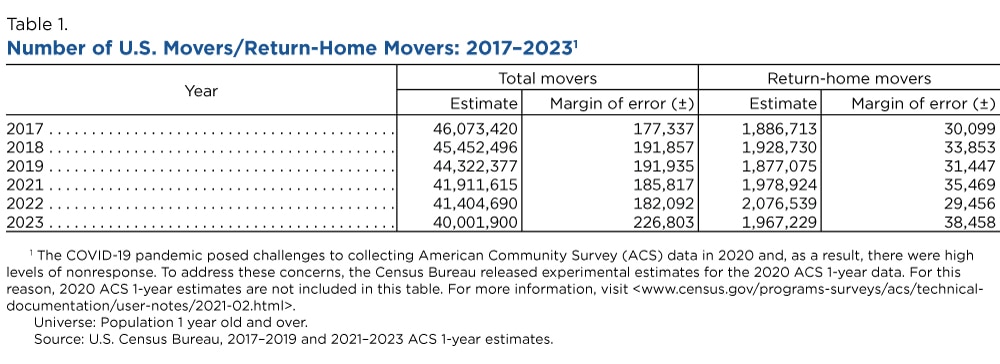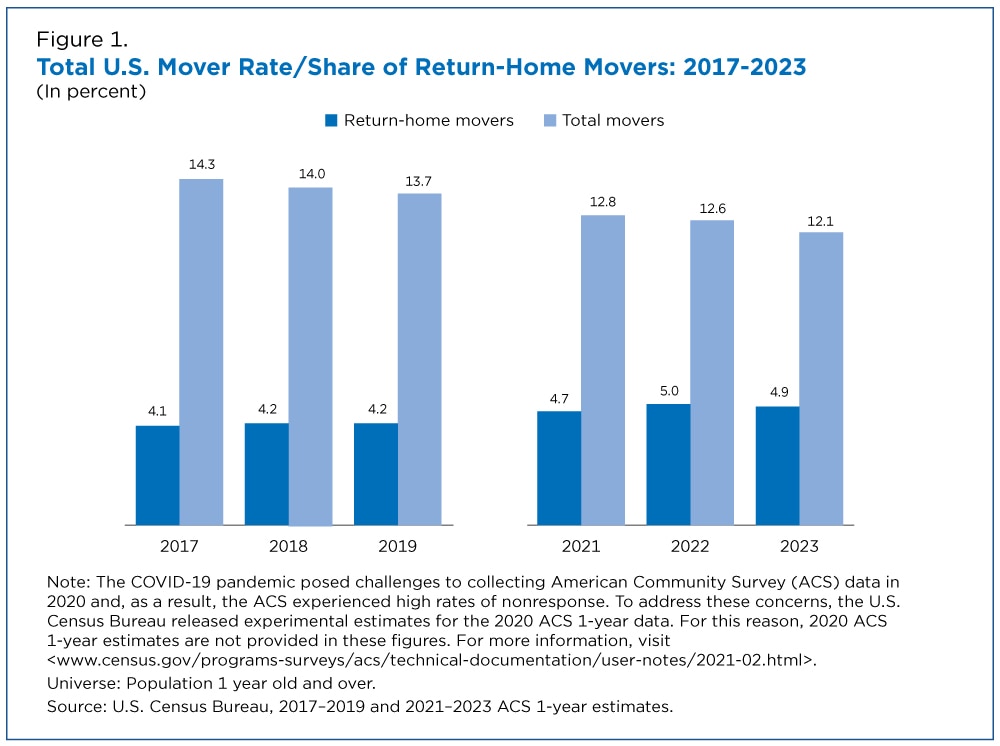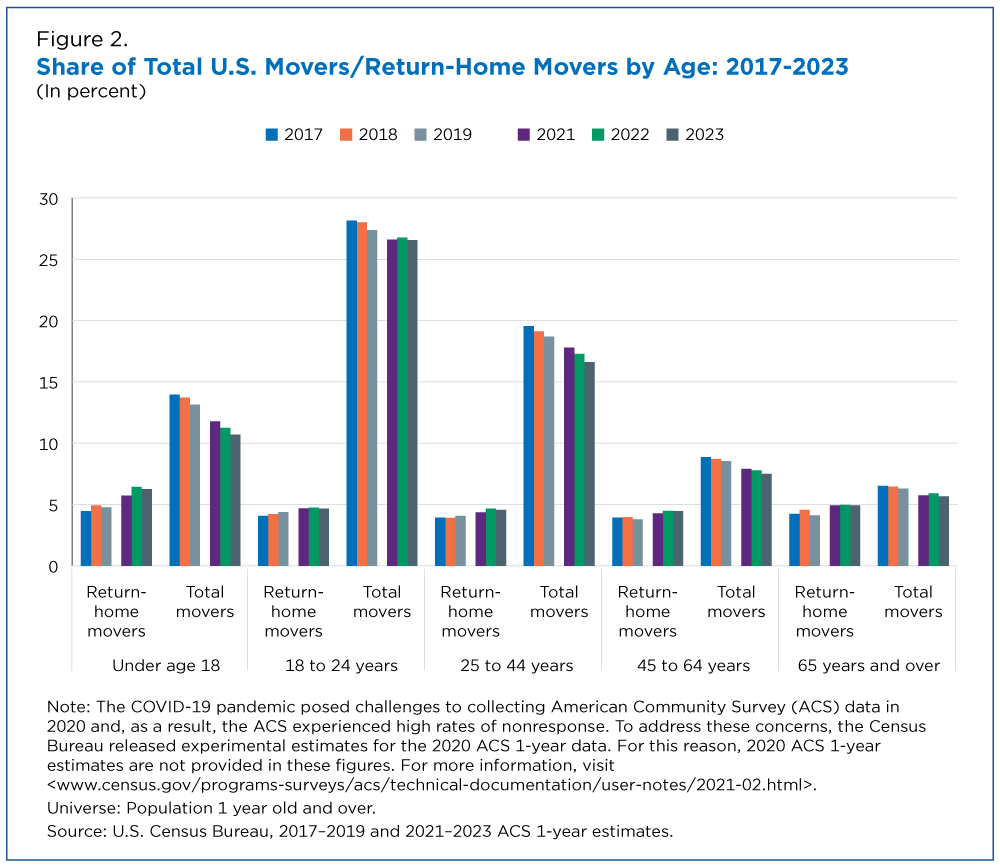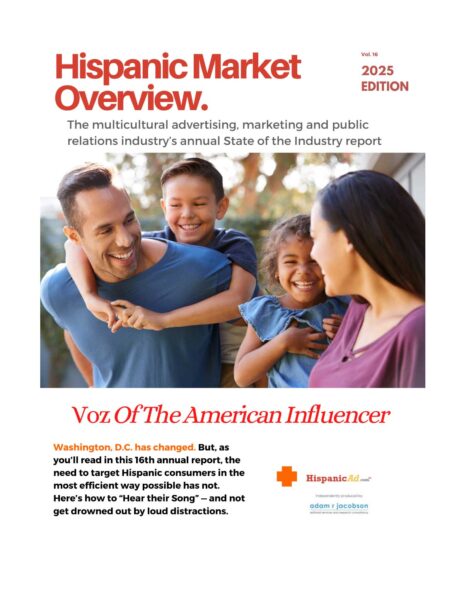Movers Returning to Their State of Birth Increased From 2019 to 2022 but Remained Flat From 2022 to 2023
January 23, 2025

By: Justin V. Palarino and L. Slagan Locklear
People move all the time but at the height of the COVID-19 pandemic, a growing share of movers returned to their state of birth, a shift that began before the pandemic and gained even more traction at its peak.
From 2019 to 2022, the share of “return-home” movers — a subset of movers who resided outside their state of birth the previous year and have since returned — increased from 4.2% to 5.0%, according to the American Community Survey (ACS) 1-year data.
The 25 to 44 age range saw consistent increases in rates of return-home movers from 2017 to 2022. In 2017, 3.9% of movers returned home. By 2022, that share increased to 4.7%.
The ACS offers a unique view of the changes in national migration patterns by providing information about the type and geographic scope of moves in the United States. Subject table S0601 and the B06 detailed table series offer insight into place of birth and current residence, while migration flows show where people move between geographies.
We focus on cross-state “return-home” movers that show people moving back to their state of birth.
Several trends emerge from 2019 to 2022:
- Return-home moves for those under 18 years of age increased from 4.8% to 6.4%.
- The return-home mover rate for those ages 25 to 44 increased from 4.1% to 4.7%.
- Among those ages 65 years and older, return-home moves declined between 2018 and 2019 but increased from 2019 to 2021, and again from 2021 to 2022.
Movers in the United States
The number of U.S. movers declined between 2006 and 2019 and continued to decline into 2021. Table 1 shows estimates for total movers and return-home movers between 2017 and 2023.
Return-home moves increased from 2017 to 2018, declined between 2018 and 2019, then increased again each year between 2019 and 2022.
Return-Home Movers
Despite declines in the total mover rates between 2017 and 2023, return-home moves increased during certain intervals throughout this period (Figure 1).
- The percentage of movers 1 year and over who moved back to their state of birth increased from 4.1% to 4.2% between 2017 and 2018.
- The percentage of return-home movers did not change significantly between 2018 and 2019, the year before the COVID-19 pandemic.
- The largest percentage change of movers returning home was from 2019 (4.2%) to 2021 (4.7%).
- Relative to 2021, the percentage of return-home movers continued to increase to 5.0% in 2022 and did not change significantly in 2023 (4.9%).
Age and Return-Home Movers
Moving patterns tend to change as people age. We look at return-home mover rates for five age groups: under age 18; 18 to 24; 25 to 44; 45 to 64; and 65 and over:
- Those under 18 had the highest percentage of return-home movers of all age groups (Figure 2), rising from 4.5% in 2017 to 4.9% in 2018, then remaining stable from 2018 to 2019 (4.8%). It increased again to 5.7% in 2021 and to 6.4% in 2022.
- Those between ages 18 and 24, or “college-age,” showed relative stability in their return-home mover rates in this period, except for an increase between 2019 (4.4%) and 2021 (4.7%).
- The 25 to 44 age range saw consistent increases in rates of return-home movers from 2017 to 2022. In 2017, 3.9% of movers returned home. By 2022, that share increased to 4.7%.
- Those between ages 45 and 64 saw relative stability in return-home mover rates, except for a drop between 2018 (4.0%) and 2019 (3.8%), and an increase between 2019 (3.8%) and 2021 (4.3%).
- The return-home mover rates for those 65 or older, or in “retirement age,” rose from 2017 (4.2%) to 2018 (4.6%), only to decline in 2019 (4.1%). In 2021, the rate was 4.9% and was not significantly different in 2022 and 2023.
































